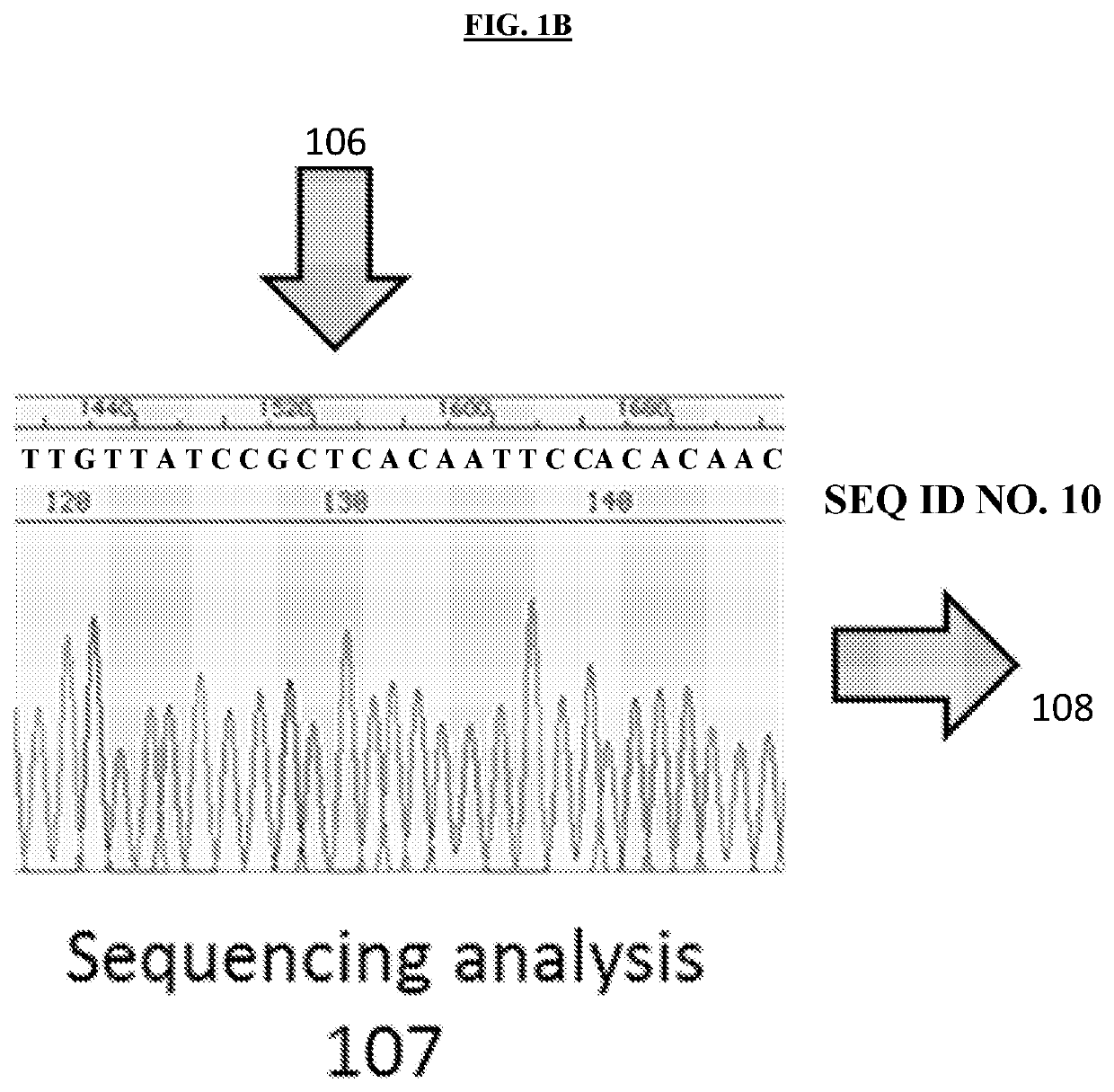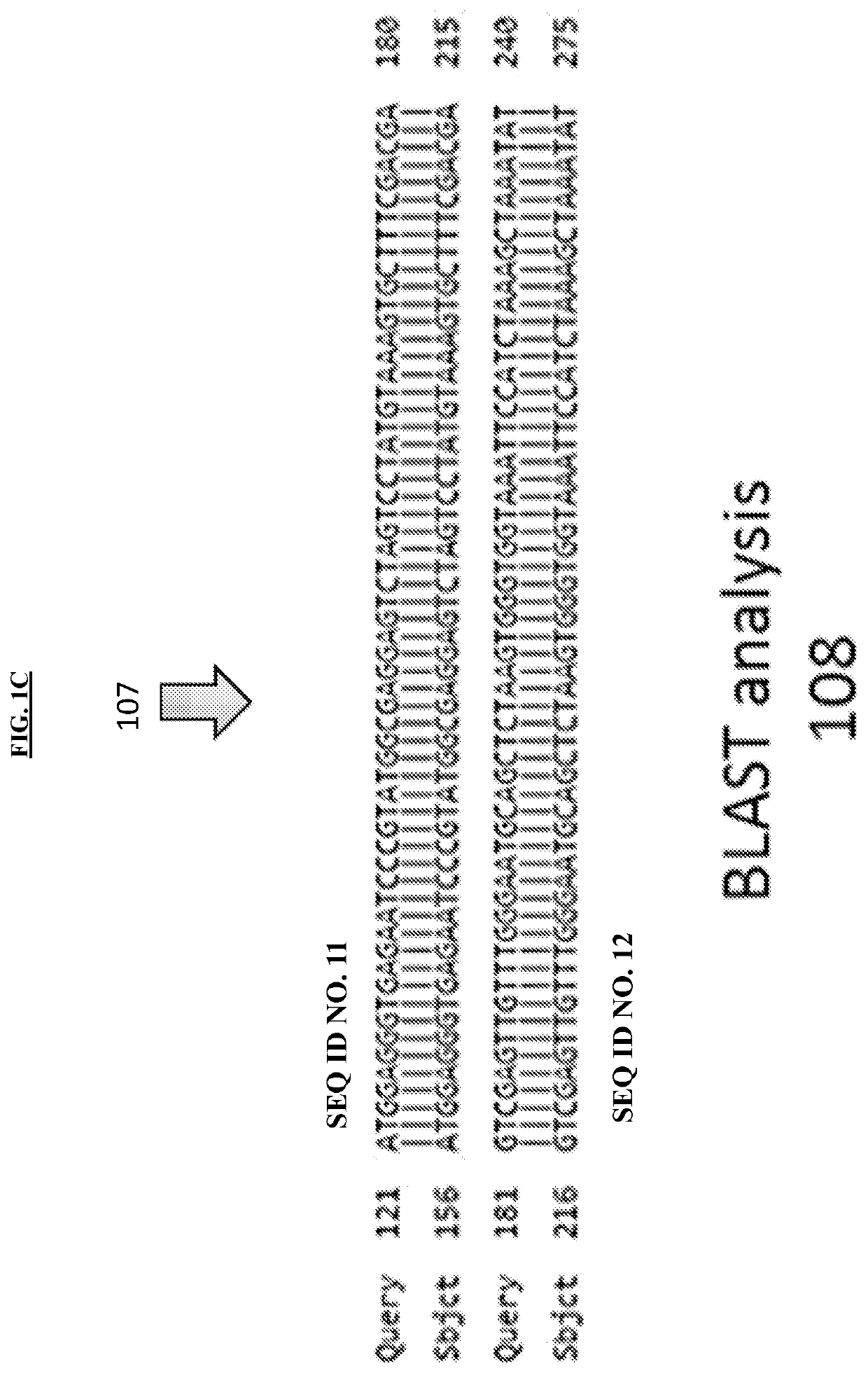Compositions and methods for brewing sour beer
a technology of sour beer and compositions, applied in the field of compositions and methods for brewing sour beer, can solve the problems of bland flavor and shortening the shelf life of sour beer
- Summary
- Abstract
- Description
- Claims
- Application Information
AI Technical Summary
Benefits of technology
Problems solved by technology
Method used
Image
Examples
example 1
f Collecting and Testing Wild Yeast Strains
[0094]Referring to FIGS. 1A-1C, samples were collected from Woodlands Cemetery (4000 Woodland Ave, Philadelphia, Pa. 19104) from local flowering trees, as well as a local bee hive by swabbing (101) and inoculating in sterile wort (102). The samples were incubated without shaking at 25° C. for about 1 week. Sediment was gently re-suspended and plated onto YPD plates (103). Once visible colonies were present after 48-72 hr growth at 25° C., morphologically distinct colonies were sub-cultured to purity (104). The purified yeast strains were subject to PCR of the D1 / D2 region to amplify the genetic material for analysis (105). The extracted DNA was separated through gel electrophoresis (106), sequenced (107), and analyzed using the Basic Local Alignment Search Tool (BLAST) to find genetic similarities (108). Table 1A lists all strains isolated and their source. Table 1B lists the similarity between the yeast isolate's D1 / D2 sequence and the top...
example 2
ion Trials Using GY7B
[0096]Once identified, isolated GY7B was tested for wort fermentation under controlled conditions. Laboratory wort was inoculated with 1×106 yeast cells / ml / ° P of Saccharomyces cerevisiae (strain Belle Saison from Lallemand), GY7B, or both strains each at 1×106 yeast cells / ml / ° P. The ferments were incubated at 20° C. for 5 days. The pH and apparent extract of the ferments were tracked daily using a pH meter and a densitometer, respectively. GY7B reduced the pH of the wort to about 3.5 after 5 days, while both the S. cerevisiae and mixed strain samples reduced the pH of the wort to only about 4.25 after 5 days (FIG. 2A).
[0097]GY7B was found to be a slower fermenting yeast than S. cerevisiae, as both the S. cerevisiae and mixed strain samples demonstrated a faster decrease in ° P over 5 days than the GY7B sample (FIG. 2B). Without being limited to any particular theory, it is suspected that the lack of acidification observed in co-fermentation between GY7B and Sa...
example 4
hanol Tolerance of GY7B
[0101]The pH and ethanol tolerance of GY7B and L. thermotolerans were evaluated by measuring growth at variable pH (FIG. 4A-5B) or ethanol percentages (v / v) (FIG. 5A-5B). Freshly cultured yeast were propagated in 5 mL of YPD, shaken at 180 rpm at 30° overnight. A spectrophotometer was used to measure the OD600 and the culture was diluted with fresh YPD to reach an OD600 of 0.1. For ethanol tolerance, each sample was spiked with 100% Ethanol to reach a final concentration of 0%, 4%, 6%, 8%, or 10% (v / v). For pH the YPD was acidified with Hydrochloric acid to cover a pH range from 3-7 which was then used to re-suspend yeast after centrifugation. 200 μL of OD600=0.1 culture was placed in a well of a clear, round-bottom 96-well plate (Corning). A TECAN fluorimeter was used to read the OD600 every 5 minutes. Throughout the experiment the fluorimeter was held at 30° with 4 minutes of orbital shaking at 120 rpm and 1 minute of linear shaking at 270 rpm in between eac...
PUM
| Property | Measurement | Unit |
|---|---|---|
| pH | aaaaa | aaaaa |
| temperature | aaaaa | aaaaa |
| temperature | aaaaa | aaaaa |
Abstract
Description
Claims
Application Information
 Login to View More
Login to View More - R&D
- Intellectual Property
- Life Sciences
- Materials
- Tech Scout
- Unparalleled Data Quality
- Higher Quality Content
- 60% Fewer Hallucinations
Browse by: Latest US Patents, China's latest patents, Technical Efficacy Thesaurus, Application Domain, Technology Topic, Popular Technical Reports.
© 2025 PatSnap. All rights reserved.Legal|Privacy policy|Modern Slavery Act Transparency Statement|Sitemap|About US| Contact US: help@patsnap.com



